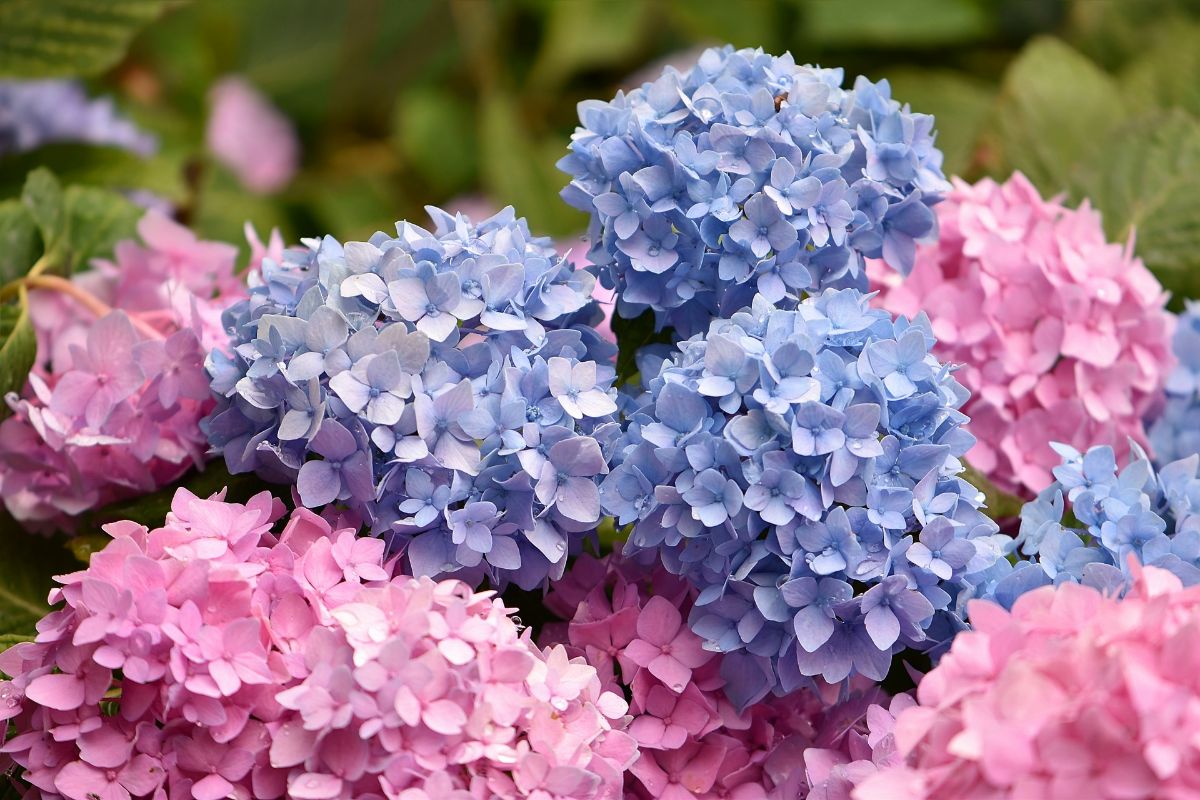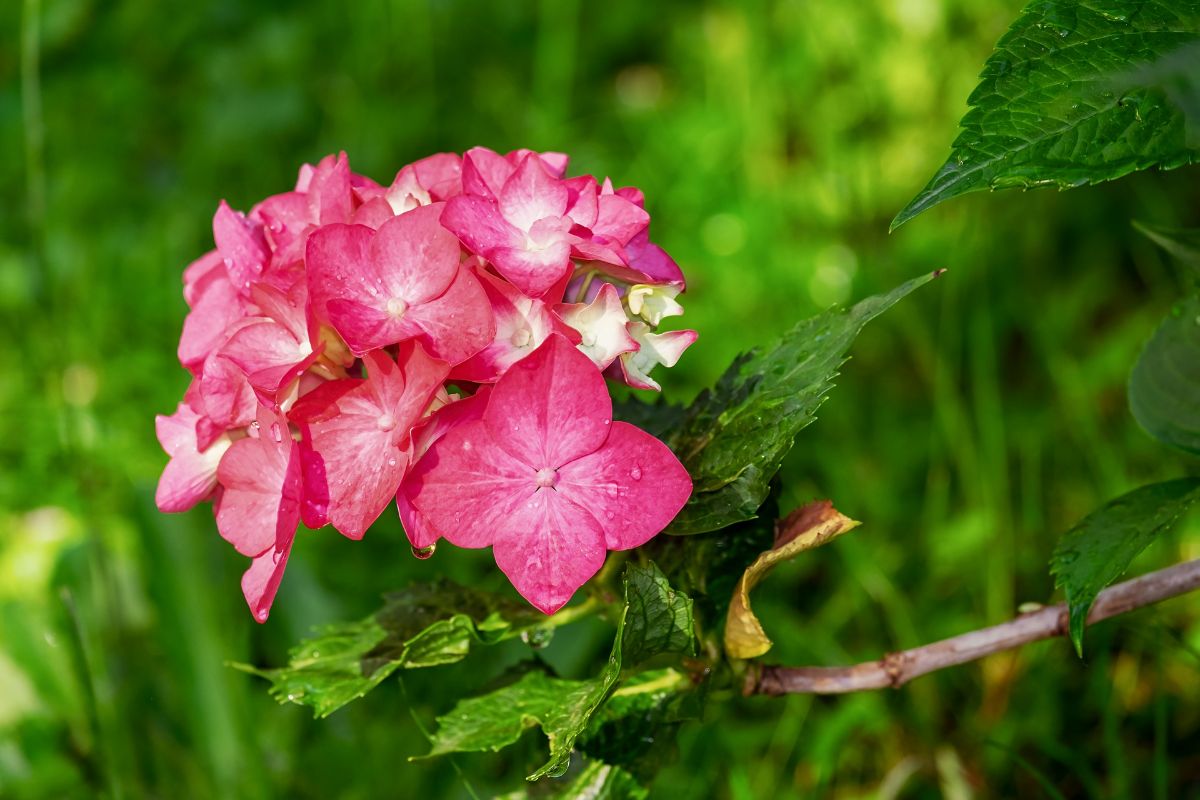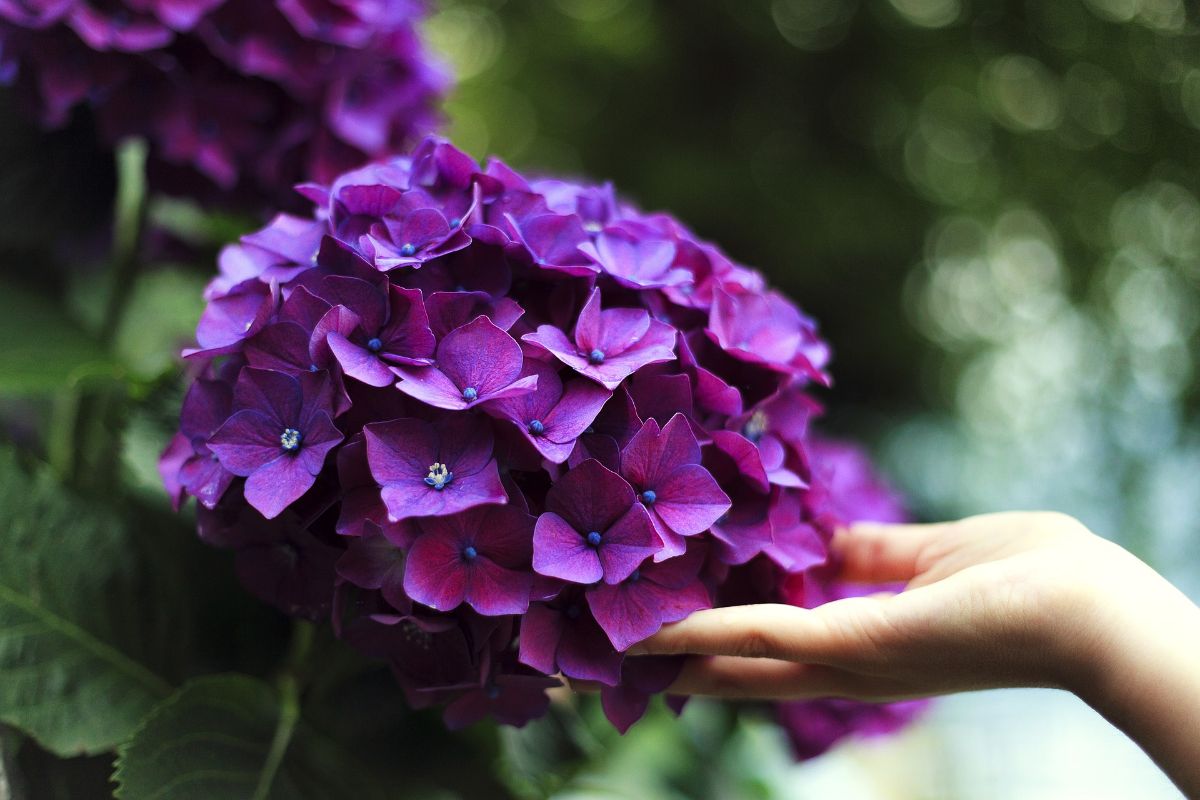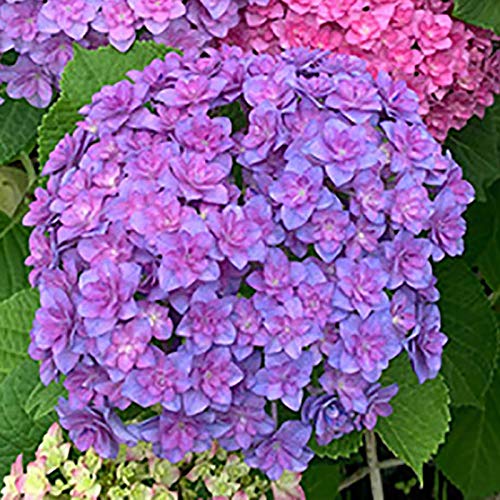
All the hydrangeas are one of the most showy flowering plants that exist. The fact that all of them are grouped as if they were balls makes them stand out, especially for their bright colors. But, when it comes to having it at home, how to plant hydrangeas? Can they be grown at any time?
If you want to have this plant in your garden, but you don't know where to put it and when to do it, we are going to answer those concerns you have so that you can enjoy it to the best of your ability.
How are hydrangeas?
The first thing you should know is that hydrangeas are not actually a single plant, but a set of several bushes. belong to the family Hydrangeaceae and you can find many varieties, from some that reach several meters in height to climbers.
The most striking of hydrangeas is, without a doubt, its flowers. These create clusters that come together to form a small ball full of flowers. They can be pink, but also white, purple, red, blue... And you can even have two mixed colors on the same plant.
When to plant hydrangeas
If you have decided to have hydrangeas in your garden and you want to know the best time to do it, without a doubt that is when winter ends and spring arrives. You can even wait a bit and do it until the beginning of summer, although the best time is in spring.
The reason is simple, and it is that hydrangeas tolerate neither extreme cold nor intense heat. For this reason, planting it when the temperature is medium and pleasant is the best way for the plant to settle in the soil and grow in a healthy way.
Depending on the climate you have, you can wait more or less. You also have to take into account the drastic changes in temperature that can occur in spring. Being small and young, hydrangeas are much more delicate and any drastic variation in temperature can kill them.
You may find yourself in the situation that your plant is not doing well. For example, that it has grown too much in the pot; or that you planted it in the garden and it is dying. These would be emergency transplants, and you can't wait for spring to do it. But when would it be done? Ideally, it would be in late fall, because that is when the plant goes into hibernation and would be less stressed.
If you can't wait (because the soil is waterlogged, or because the roots are coming out of the pot or it is dying) you should do it immediately, whatever the season. The plant will be very stressed, and may even die, so it is important to give the plant all the care it needs to recover.
Where to plant hydrangeas

Now that you know when to plant hydrangeas, it's time to discover where to do it. In a pot? In the garden? Full sun? In shadow?
La location of hydrangeas is very important, especially because of what we have told you before, that it does not tolerate excesses of cold or heat. So when planting it, it is better to choose a place where there is a lot of light but not direct sun. And we would even add that there should also be shade if temperatures are very high.
You can plant it in the garden or in a pot. You can even put it in a pot and enjoy it indoors so that, after a few years, when it has grown enough, finally place it in the garden. In this way, you will get it to adapt to the climate you have in the area where you live and you will have more chances of surviving later.
In addition to the location, it is necessary to take into account the type of soil that is going to have. Hydrangeas need the soil to be acidic and moist all the time (without being waterlogged because that could damage their roots). The best would be clayey soil, so if there is no such soil in your garden, you will have to make a larger hole to fill it with that soil so that it is well cared for.
How to plant hydrangeas

Planting hydrangeas has no mystery, but it is true that you can do it in two different ways: with cuttings or with seeds.
We tell you the two ways so that you have a chance to get ahead.
Plant hydrangeas with cuttings
This is the usual way of planting because parts of a somewhat more formed plant. In fact, there is a better chance that it will come out ahead than with seeds.
And when to do it? After flowering, when the plant is going to enter a mode of lethargy, before the flowers wither, take some branches that have at least 3 nodes and new buds.
This will come with leaves but you have to remove half of them from just the top two nodes. This is done so that it does not have as much wear.
Take rooting to enhance the chances that it will take well and plant it in somewhat acidic soil. You must put it in the shade and water so that the substrate remains moist.
In 20 days you should know if the cutting has managed to get ahead. If so, we recommend waiting for spring to put it in its final location.
Plant hydrangea seeds
In the case of seeds, the process you must follow is the following:
- Prepare the area where you are going to plant the pots. It can be the garden (an area where it gets soft morning sun and there is light but not direct the rest of the time and with a suitable soil) or a pot, with a mixture of clayey soil and drainage.
- The seeds must be collected at the time of planting, although it is also useful to collect them and wait until spring to do so (always in a dark, dry and well-protected place).
- These seeds should not be buried more than 1-2 cm in the ground.
- Water well to moisten all the soil and keep it that way until you see them germinate.
- Only when you have seedlings of several centimeters will you be able to transplant them into a definitive pot or into the garden.
Hydrangea care

After planting the hydrangeas, do not think that everything is over. It is necessary that you carry out a series of care so that they can grow and flourish correctly. And what are those care? We summarize them:
- Location: always choose a place with a temperate climate where the temperature hardly drops.
- Lighting: It needs indirect light for 3-4 hours. It is better to place it in semi-shade or full shade (it will depend on the temperature).
- Earth: it has to be rich in organic matter, acid, and well drained.
- Irrigation: it is important that the soil stays moist, so it may be necessary to control the humidity in that area. When watering, the water should always be directed to the ground, never watering from above.
- Subscriber: in summer, an organic or specialized hydrangea fertilizer is recommended to increase the flowering of the plant.
Do you dare to plant hydrangeas in your house?
